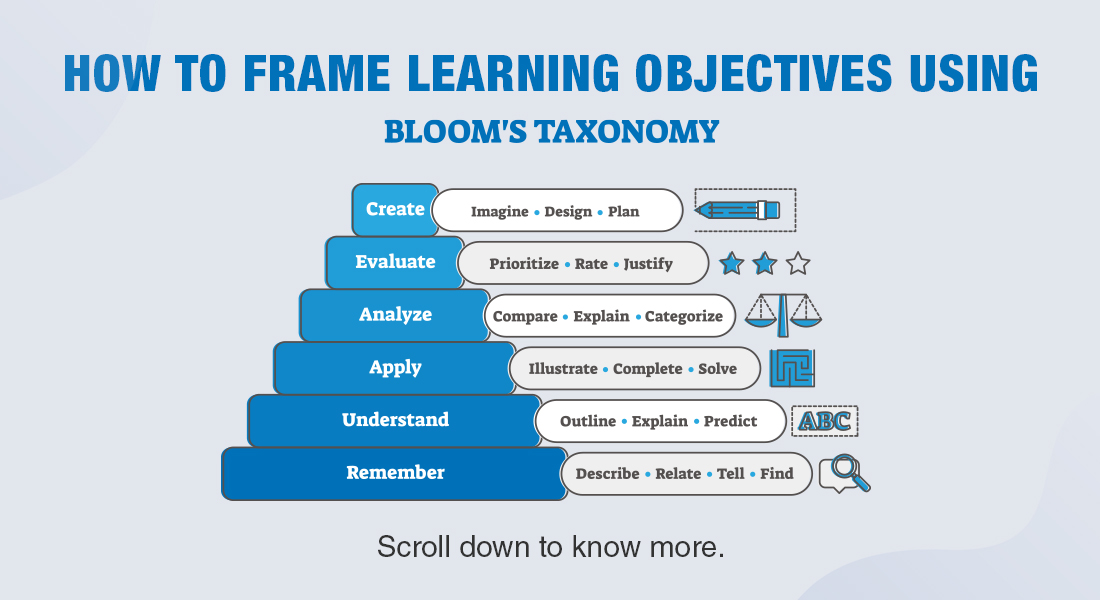Blooms Taxonomy: The Science of Learning Objectives – Part 2

In my previous posts, Learning Objectives – What They Are and Why You Need Them and The Science of Learning Objectives – 1 , we have seen what learning objectives are and why they are important. We have also seen the first two levels of the cognitive domain of Bloom’s taxonomy, which provide the basis for describing the desired performance of the learner after completing the course, i.e. Remembering and Understanding levels. In this post, we will look at the next two levels viz. Applying and Analyzing.
Applying level
At this level, the learner must be able to use the knowledge gained through the training program in their jobs. Examples of learning objectives at the Applying level are:
- The learner would be able to use a computer application to calculate employees’ wages.
- The learner would be able to follow the procedure to repair a gas stove.
Let us look at the verbs commonly associated with this level.
- Organize
- Generalize
- Prepare
- Produce
- Choose
- Sketch
- Apply
- Draw
- Show
- Paint
- Follow
- Discover
Analyzing level
The learners, at this level, must be able to analyze the information acquired through the training program. Examples for learning objectives at this level are:
- The learner would be able to prioritize the tasks he needs to perform.
- The learner would be able to classify turbines based on their efficiency.
The commonly used verbs used at this level are as follows.
- Compare
- Analyze
- Classify
- Point out/Identify
- Distinguish
- Categorize
- Differentiate
- Subdivide
- Infer
- Prioritize
- Survey
- Select
- Compute
- Outline
Let us now look at examples of learning objectives that can be framed for six training programs viz. sales training, product training, service technician training, software training, safety training, and social media policy training.
| Training | Examples of Learning Objectives at the Applying level | Examples of Learning Objectives at the Analyzing level |
| Sales Training | The learner would be able to follow the sales process. | The learner would be able to analyze the bottlenecks of the sales process. |
| Product Training | The learner would be able to show how the product meets the needs of the buyer. | The learner would be able to compare the product with those of competitors. |
| Service Technician Training | The learner would be able to discover the problem with the machine. | The learner would be able to analyze the problem to identify its cause. |
| Software Training | The learner would be able to apply the procedure to create a pivot table using MS-Excel. | The learner would be able to identify the cause of a software breakdown. |
| Safety Training | The learner would be able to follow the fire safety procedure. | The learner would be able to outline the reasons for not following the safety procedure. |
| Social Media Policy Training | The learner would be able to follow the social media usage guidelines. | The learner would be able to classify violations based on the level of severity. |
At the Applying level of cognition, the learner would be able to use the information learned during the training program in his work. And, at the Analyzing level, he would be able to analyze the information. In my next post, we will examine the Evaluating and Creating levels of the cognitive domain of Bloom’s Taxonomy. So, stay tuned.





